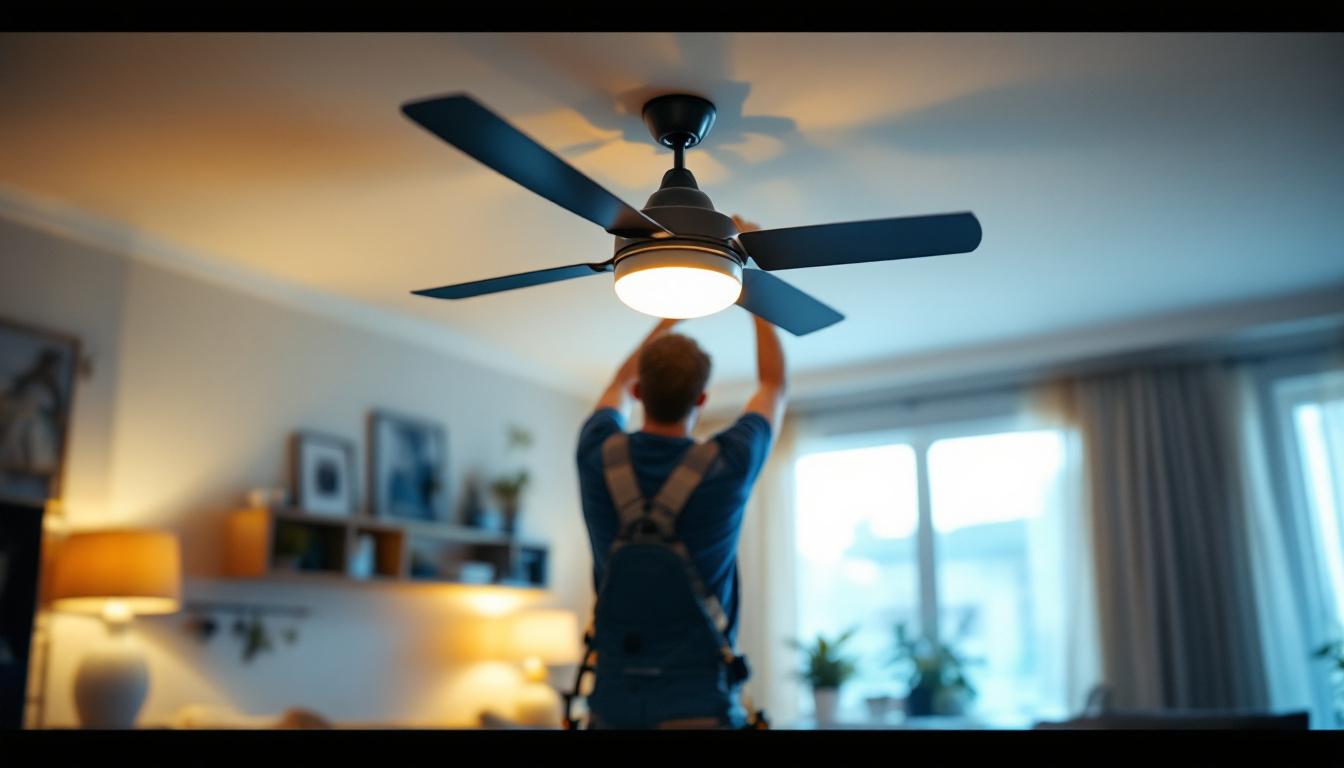
Occupancy sensors have become an integral part of modern lighting systems, offering both energy efficiency and convenience. For lighting contractors, understanding the nuances of these devices is crucial. While many contractors are familiar with the basic functionality of occupancy sensors, there are several overlooked aspects that can significantly impact their effectiveness and client satisfaction.
This article delves into the often-missed details surrounding occupancy sensors, providing insights that can enhance the implementation and performance of lighting systems. By addressing these considerations, contractors can ensure that they are delivering the best solutions to their clients.
One key factor to consider is the type of occupancy sensor being used. There are several different technologies available, including passive infrared (PIR), ultrasonic, and dual-technology sensors. Each type has its own strengths and weaknesses depending on the specific application and environment. For instance, PIR sensors are excellent for detecting motion in smaller, enclosed spaces, while ultrasonic sensors can cover larger areas and detect even the slightest movements. Understanding these differences can help contractors choose the right sensor for each unique installation, ultimately leading to improved energy savings and user satisfaction.
Moreover, the placement and calibration of occupancy sensors are critical to their performance. Improperly positioned sensors can lead to false triggers or missed detections, resulting in wasted energy or inadequate lighting. Contractors should take the time to assess the layout of the space and the typical movement patterns of occupants. Additionally, many modern sensors come with adjustable sensitivity settings, allowing contractors to fine-tune their performance based on the specific needs of the environment. By prioritizing proper installation and calibration, contractors can maximize the effectiveness of occupancy sensors and provide clients with a seamless lighting experience.
Occupancy sensors come in various types, each designed for specific applications. Knowing the differences can help contractors choose the right sensor for their projects.
Passive Infrared (PIR) sensors are one of the most common types of occupancy sensors. They detect motion by sensing changes in infrared radiation, which is emitted by people and animals. These sensors are ideal for areas with predictable movement patterns, such as hallways and conference rooms.
However, contractors often overlook the placement of PIR sensors. Proper positioning is critical to ensure that the sensor can effectively detect movement across the desired area. If placed too high or in a corner, the sensor may miss activity, leading to frustration for the end user. Additionally, environmental factors such as temperature fluctuations and the presence of large objects can interfere with the sensor’s accuracy, making it essential to conduct a thorough site assessment before installation.
Ultrasonic sensors operate by emitting sound waves and measuring the reflection from objects in the environment. These sensors are more sensitive than PIR sensors and can detect motion even through obstacles, making them suitable for complex spaces.
Contractors may underestimate the potential of ultrasonic sensors in open office layouts or areas with partitions. However, their ability to detect movement behind barriers can significantly enhance energy savings and user convenience. Proper calibration is essential to avoid false triggers, which can lead to unnecessary lighting activation. Furthermore, ultrasonic sensors can adapt to changes in the environment, such as furniture rearrangements, making them a flexible choice for dynamic workspaces.
Dual technology sensors combine both PIR and ultrasonic technologies to minimize false triggers while maximizing detection capabilities. These sensors are particularly effective in environments with varying occupancy patterns.
One common oversight is the assumption that dual technology sensors are a one-size-fits-all solution. While they offer versatility, contractors should still evaluate the specific needs of each space. For instance, in a large warehouse with infrequent movement, a dual technology sensor may not be necessary, leading to increased costs without added benefits. Moreover, understanding the ambient noise levels and the layout of the space can further refine the selection process, ensuring that the chosen sensor operates optimally and meets the unique demands of the environment.
Proper installation of occupancy sensors is crucial for optimal performance. Many contractors overlook specific installation practices that can lead to subpar results.
Placement is key when it comes to occupancy sensors. Sensors should be installed at a height that allows for maximum coverage while avoiding obstructions. For PIR sensors, a height of 8 to 10 feet is generally recommended, whereas ultrasonic sensors can be placed slightly higher.
Additionally, contractors should consider the layout of the space. In large rooms, multiple sensors may be required to ensure comprehensive coverage. Failing to account for the room’s dimensions can result in dark spots where the sensor cannot detect motion, leading to user dissatisfaction.
Wiring is another critical aspect that contractors often overlook. Ensuring that the wiring is correctly installed and that connections are secure can prevent issues down the line. Loose connections can lead to intermittent functionality, which can frustrate end users.
Moreover, contractors should be aware of the compatibility of occupancy sensors with existing lighting systems. Understanding the electrical requirements and ensuring that the sensor can handle the load is essential for a successful installation. This attention to detail can save time and resources during the installation process.
Once installed, occupancy sensors require calibration and testing to ensure they function as intended. Many contractors skip this step, assuming that the sensors will work out of the box. However, each space has unique characteristics that may require adjustments to sensitivity and timing settings.
Testing the sensors in real-world conditions can help identify any issues before the project is completed. This proactive approach can lead to greater client satisfaction and reduce the likelihood of service calls after installation.
One of the primary benefits of occupancy sensors is their ability to enhance energy efficiency. However, contractors often overlook how to effectively communicate these benefits to clients.
When discussing occupancy sensors with clients, it is essential to provide a clear understanding of the potential energy savings. By calculating the expected reduction in energy consumption based on usage patterns, contractors can present a compelling case for the investment in these technologies.
For instance, in commercial settings where lights are often left on in unoccupied areas, occupancy sensors can lead to significant reductions in energy costs. Providing clients with data on potential savings can help justify the initial investment and encourage them to embrace the technology.
Beyond immediate energy savings, occupancy sensors contribute to long-term benefits such as extended lamp life and reduced maintenance costs. By minimizing the time that lights are on unnecessarily, these sensors can prolong the lifespan of bulbs and fixtures.
Contractors should highlight these long-term advantages when discussing occupancy sensors with clients. Emphasizing the overall cost-effectiveness of the solution can help clients see the value beyond just the initial installation costs.
Misconceptions about occupancy sensors can lead to hesitancy among clients. Lighting contractors play a crucial role in dispelling these myths.
One common misconception is that occupancy sensors can completely eliminate the need for manual controls. While these sensors provide significant automation, they should complement, not replace, manual controls in certain situations.
For example, in spaces where users may need to adjust lighting for specific tasks, having manual overrides can enhance user satisfaction. Contractors should educate clients on the importance of maintaining a balance between automation and manual control.
Another misconception is that occupancy sensors are infallible. While they are highly effective, they do have limitations. For instance, certain environmental factors, such as temperature fluctuations or physical obstructions, can affect their performance.
Contractors should be transparent about these limitations with clients, setting realistic expectations regarding sensor performance. This openness can help build trust and ensure that clients are satisfied with their systems in the long run.
As smart building technology continues to evolve, the integration of occupancy sensors with other systems becomes increasingly important. Lighting contractors should be aware of the potential for synergy between these technologies.
Integrating occupancy sensors with smart lighting systems can enhance energy efficiency and user experience. For example, occupancy sensors can trigger lighting adjustments based on real-time occupancy data, ensuring that spaces are always adequately lit when needed.
Contractors should consider how occupancy sensors can work alongside other smart technologies, such as building management systems and HVAC controls. This holistic approach can lead to more comprehensive solutions that meet the needs of modern buildings.
Occupancy sensors can provide valuable data on space utilization, which can inform future design and operational decisions. By collecting and analyzing this data, contractors can help clients optimize their spaces for better efficiency and user experience.
Contractors should be prepared to discuss the potential for data-driven insights with clients. This forward-thinking approach can position contractors as valuable partners in the ongoing management and optimization of building systems.
Occupancy sensors offer a wealth of benefits for both lighting contractors and their clients. However, understanding the intricacies of these devices is essential for maximizing their effectiveness. By addressing the common oversights discussed in this article, contractors can enhance their installations and provide greater value to their clients.
From selecting the right type of sensor to ensuring proper installation and integration with smart technologies, every detail matters. By staying informed and proactive, lighting contractors can lead the way in delivering innovative and efficient lighting solutions that meet the demands of modern spaces.
Ready to elevate your lighting projects with the most efficient occupancy sensors on the market? Look no further than LumenWholesale, where we provide contractors with the highest quality, spec-grade lighting products at unbeatable wholesale prices. Say goodbye to unnecessary markups and hello to superior lighting solutions that meet the highest industry standards. With our hassle-free bulk buying and free shipping, you can ensure your installations are top-notch while keeping costs down. Don’t compromise on quality or value—explore our selection now and discover the ideal blend of performance, affordability, and convenience with LumenWholesale.

Discover the ultimate guide for lighting contractors seeking high-quality, American-made Christmas lights.

Discover how residential ceiling fans can enhance efficiency for lighting contractors by optimizing energy use, improving air circulation, and offering versatile design options.

Discover the essentials of solar power lighting tailored for contractors.

Discover how outdoor pole solar lights can transform your space by enhancing safety and efficiency in lighting installations.